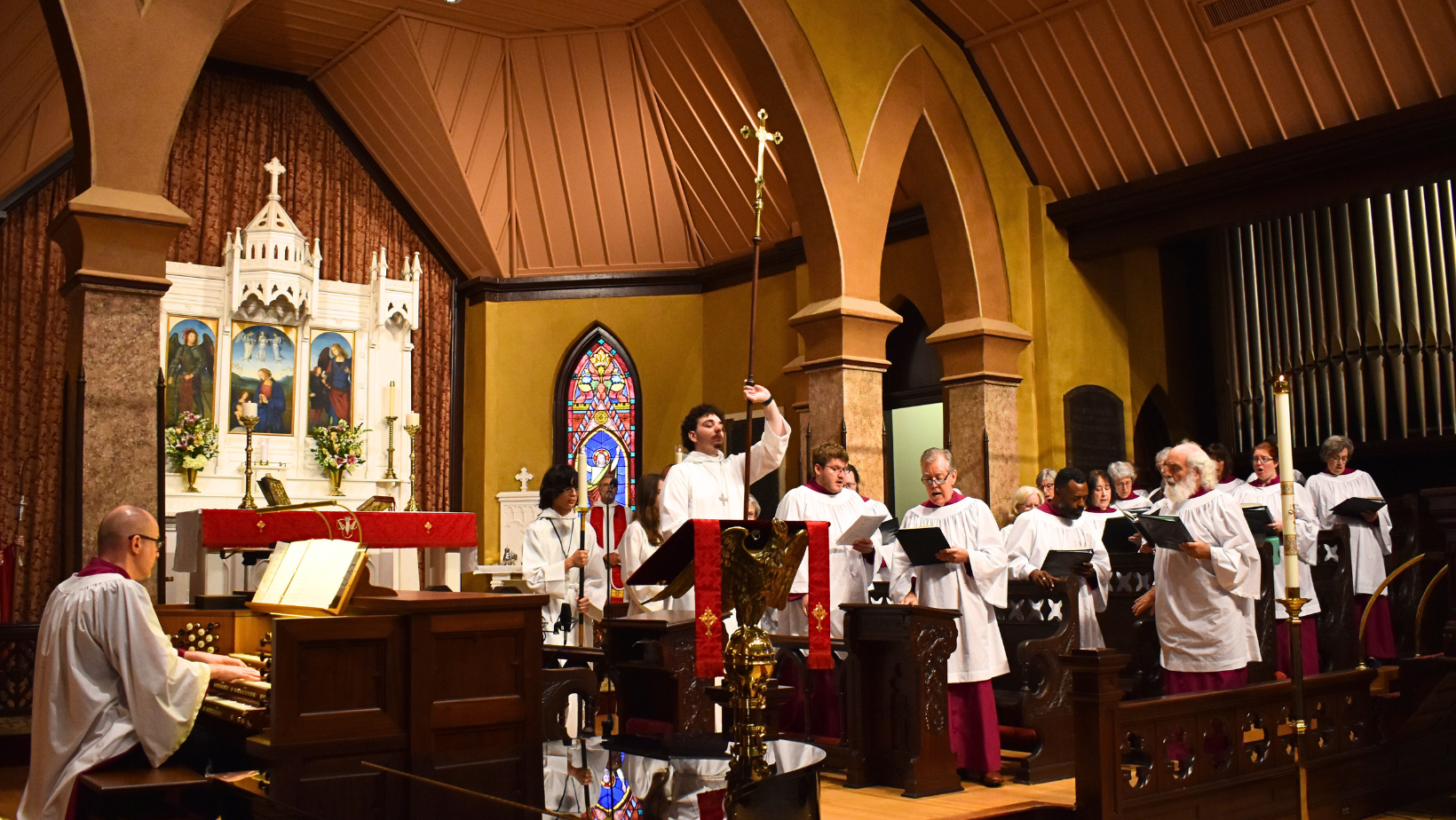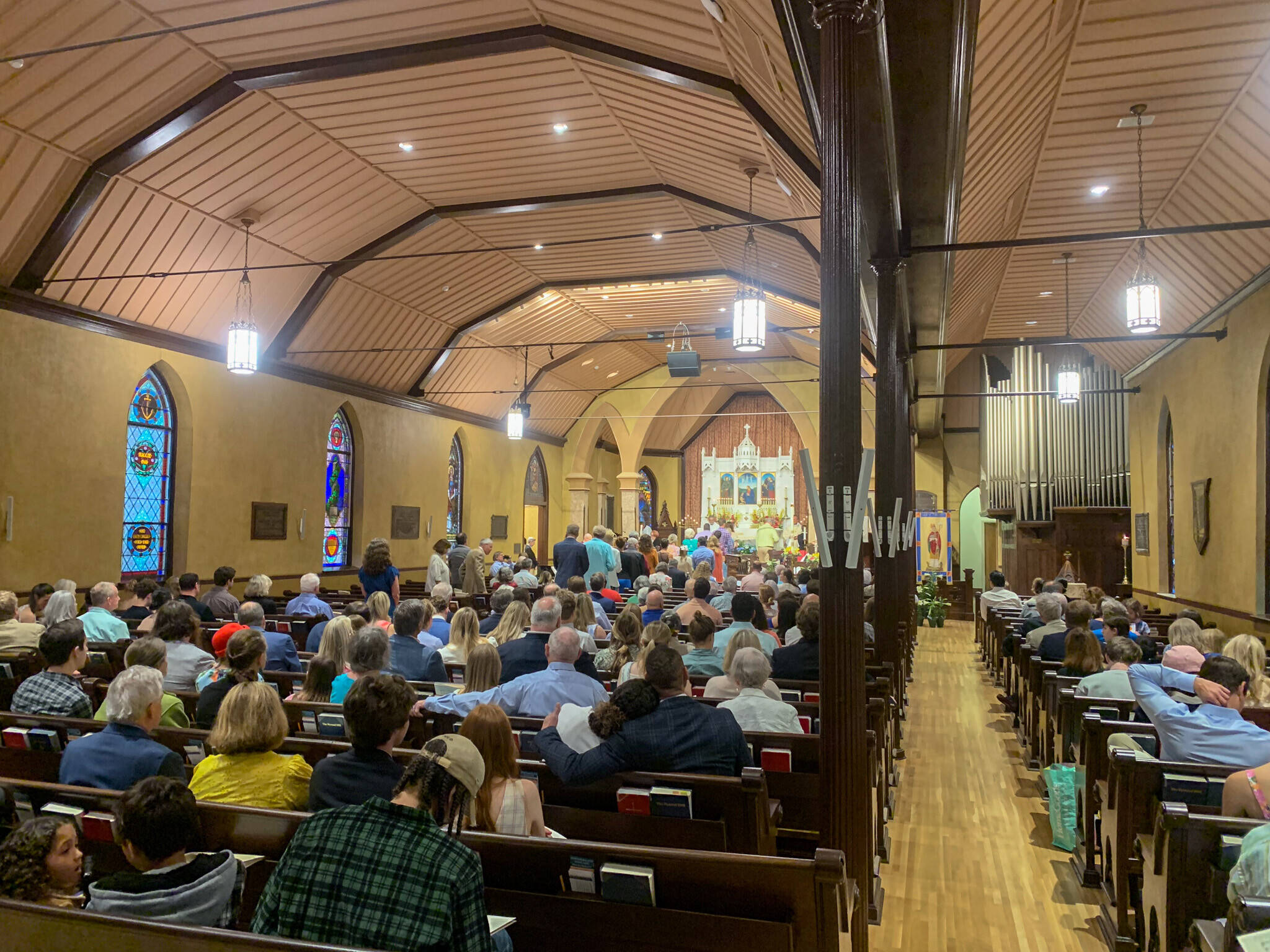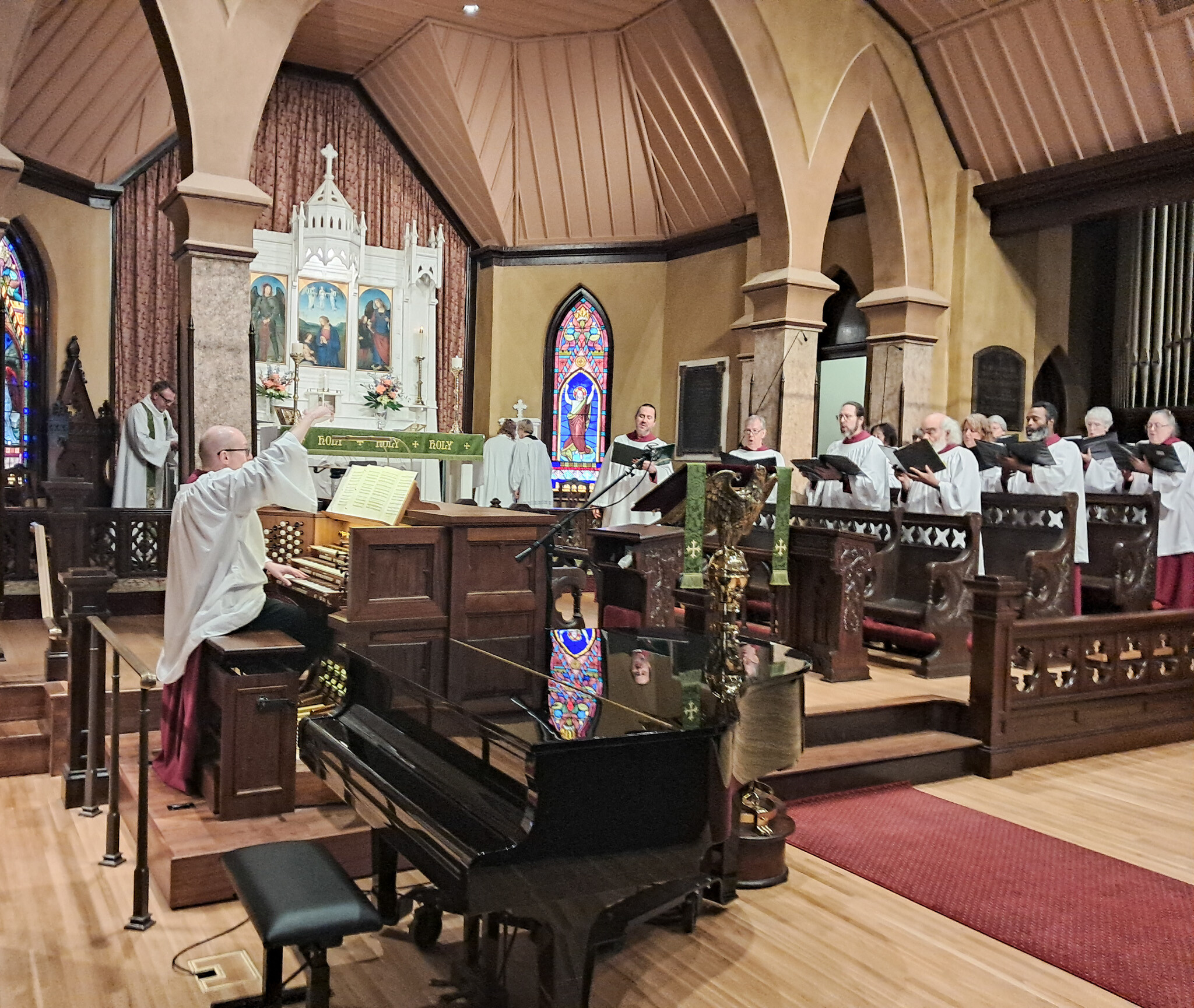
The Christian Pentecost is sometimes called ‘the birthday of the Church’; more properly, it marks the renewal and expansion of the ekklesía, the solemn assembly of those in covenant relationship with the Lord.
Pentecost (‘fiftieth’) is the Greek name for the ancient Israelite festival of Shavuot (‘weeks’), marking the end of the grain harvest fifty days, or a ‘week of weeks’, after its beginning at Pesach (Passover). Pentecost, like Passover, is an occasion of pilgrimage to Jerusalem; probably by the time of Christ, it had also come to commemorate the giving of Torah to Moses [Exodus 19] and thus the constitution of Israel as a holy nation.
The Christian feast of Pentecost is so called because the powerful experience of the Holy Spirit’s advent as recorded in the second chapter of the Acts of the Apostles took place at this time. Much of the rest of the Acts, from which we have been reading in Eastertide, chronicles the outflow of this event: the Spirit falls upon Gentile and Jew alike, as St Peter and others are astonished to discover, and Peter can thus apply the same terms used of Israel to the followers of Christ, who are themselves then known as the ekklesía: living stones, a spiritual house, a royal priesthood, a chosen race, a holy nation, God’s people [I Peter 2.9; cf. Exodus 19.6].
Thus Christians see the coming of the Spirit at Pentecost as the fulfillment of not only the divine promise to reanimate Israel after its exile and dissolution, but also of the promise to pour out the Spirit upon all flesh. It is the fulfillment of Christ’s promises to send ‘another Advocate’ so that the power once concentrated in his single human Body could be shared more broadly with his differentiated human Body, the Church, and thence to the whole world. It is also an undoing of the chaos and sundering of Babel recounted in this Sunday’s Old Testament Lesson, not by the eradication but by the accommodation of difference – divers languages and peoples, varieties of the Spirit’s gifts, and a whole list of her fruits. It is nothing less than the renewal of all creation by the Spirit who is the agent of that creation, its structure, and sustainer.
The Introit antiphon –
The Spirit of the Lord has filled the whole of earth’s compass:
and that which holds all things together understands all that is uttered
(Wisdom 1.7)
– speaks to this outpouring of the Spirit and her cosmic role, and this verse is taken in the liturgical context of this day to refer to the aforementioned undoing of Babel.
Our Sequence hymn details some of the primary symbols, attributes, and activities associated with the Spirit. ‘Veni creator spiritus’ is at the core of the Church’s hymnic repertory, as evidenced by the three paraphrases [500, 502/502, 503/504] and several musical versions and settings in the Hymnal and the fact that it is one of only a handful of hymns specifically mentioned in the Book of Common Prayer (where it is appointed to be sung at ordinations). Attributed to the ninth-century German bishop-monk Rabanus Maurus, it has been sung not only on such occasions but also at Evening Prayer on the Feast of Pentecost and, in the Middle Ages, as an invocation before every Mass. Both the original, probably eleventh-century, melody [502/504], and a simplified version of it from the German Reformation tradition [501] are found in the Hymnal. As the Hymnal texts are unfortunately weak or incomplete representations of the Latin, a composite translation coming much closer to the original is given here:
Creator Spirit, Dove divine,
come light in every faithful mind,
and with celestial grace be blest
your handiwork: each human breast.
O gift of God, yours is the sweet
consoling name of Paraclete,
and fire and love and living spring
and balm for spirits languishing.
The gifts you bear are seven in kind,
finger of God’s right hand divine,
the Father’s promise sent to teach
our tongues the wondrous skill of speech.
Enkindle every sense and thought,
pour your great love into each heart,
and grant our flesh, so weak and frail,
your boundless strength, which shall not fail.
Drive far away our deadly foe,
and grant us your true peace to know:
thus we, led by your guidance still,
may safely pass through every ill.
To us, through you, the grace be shown
to know the Father and the Son;
and, Spirit flowing from the same,
may you our faith for ever claim.
Another hymn to the Holy Spirit, ‘Veni, iam veni, benignissime’, provides the text for the Communion anthem. This eleventh-century text largely appeals to the Spirit from the point of view of those in times of great need; the setting by twentieth-century American composer Leo Sowerby underscores this faintly desperate mood with a plaintive tune for the first and third stanzas framing a musically tortuous setting of the middle stanza (set off with scoring for choir in three octaves against very rich harmony in the organ part). There are musical settings of entreaties which seem to treat the answer to prayer as an accomplished fact – witness the many very joyful settings of ‘Kyrie eleison’ – but this one, ending with a final plea that barely comes to a settled conclusion, suggests the prayer in question is still very much in progress. Both are aspects of the landscape of the human soul seeking God and a way through this life.
Our closing hymn, ‘Hail this joyful day’s return’, was historically sung at Evening Prayer on this feast. Amidst a straightforward acknowledgement of the present occasion, a recounting of the original event, and prayers for the coming of the Spirit, the translator beautifully summarizes several lines of Latin and the import of Pentecost: why did the Spirit appear as tongues of fire? ‘Tongues, that earth may hear their call; fire, that love may burn in all.’ The hymn appears with a plainsong melody at Hymn 223; we sing it to the slightly quirky 15th-century folk tune printed at 224, also heard in variations for organ by several modern composers as the prelude to the service.





Login To Leave Comment